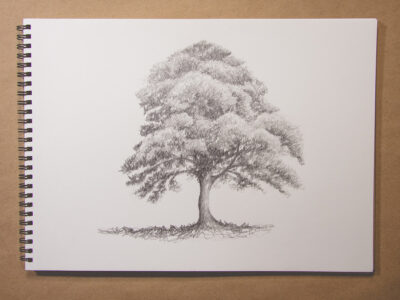In response to the question,
“How do you paint a tree?,”
John Carlson wrote a beautiful section on the need to understand trees.
“Know your trees, their nature, their growth, their movement; understand that they are conscious, living things, with tribulations and desires not wholly disassociated from your own. Emerson has beautifully named trees, “rooted men.” In many ways they excel man.
“A tree seldom or never encroaches upon the liberty of another tree, if it can be avoided. Usually “both parties” settle equitably, and without “due process.” A tree recognizes that its liberty ends where the next tree’s liberty begins. A tree never wastes its growth in unnecessary twistings, nor in frivolous waste of energy. If a tree is seen to twist and turn . . . , these turns and twists are intimately connected with, or in rapport with, the turnings and twistings of a neighboring tree. This engenders a certain rhythm or flow of related lines in a wood.”
And then discussed the need to treat them with the respect they deserve.
“It is curious how one’s feelings about trees change, in proportion to one’s appreciation of their importance and dignity as live beings. Trees are individual beings: they can be comic, heroic, tragic to the sensitive, practiced eye of the landscape artist.”
I wish I could impart his words to every child I see mindlessly pulling the leaves off trees.

 How You Can Help Bees and Butterflies
How You Can Help Bees and Butterflies